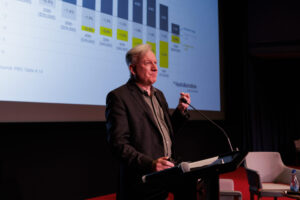First published in the Australian Financial Review – Here
The first order of business for the Turnbull government when Parliament returns next week is to cut the dole for new recipients from $263.80 to $259.40 per week. That is less than the tax free allowance politicians receive for each night they spend in Canberra. It is as if the Prime Minister plans to repeat the mistakes of Tony Abbot’s first budget but hopes to avoid the inevitable consequences. What could go wrong?
The last thing the Australian economy, or Australian politics, needs is another failed attempt to pass the failed austerity-based policies through the Senate. Turnbull’s plan to stick to his promise to stick it to the poor at the same time he is reneging on a promise to reign in tax concessions for high income superannuants adds political insult to economic injury.
There are 725,500 unemployed Australians, up from 686,600 at the time of the 2013 election. There are a further 1,067,300 underemployed workers and the youth unemployment rate is 13.2 per cent. In Tasmania, where the Liberals just lost all of their federal seats, the unemployment rate is 6.2 per cent, well above the national unemployment rate of 5.7 per cent.
The Liberals don’t seem to understand that the political hay they made at the expense of “dole bludgers” back when the economy was booming has gone mouldy. The economy and the electorate have changed. While Australian conservatives are quick to unite comfortable majorities against distant minorities, they’ve become slow in detecting shifts in community sentiment. Whether it’s a tin ear or a hard heart is difficult to distinguish, but either way the risks of attacking the victims of an economy that is slowing on the Coalition’s watch are significant.
When the post-GFC economy began to slow the then Labor government successfully argued that increasing the age pension was a good way to stimulate the economy. The Liberals agreed. But now they think cutting the dole is a good way to help a flagging economy. So much for policy principles.
Economists call the proportion of a person’s income that is spent the “propensity to consume” and it is widely agreed that low income earners have a much higher “propensity to consume” than high income earners who tend to save a lot more for a rainy, or sunny, tax free retirement.
Risky choice
While the fact that different people do different things with the same amounts of money is not a new idea for economists, such complexities have been stripped from our public debate about economic management in order to focus voter attention on whether government debt and deficits are “good” or “bad”. Such anodyne and simplistic sloganeering is doing far more harm to our economy than the $4.40 per week the Turnbull government wants to take from the unemployed.
Cutting government spending is a risky thing to do in a slowing economy. Carefully designed reform can reduce a structural deficit without reducing the level of demand. Indeed, such reforms are already on the table. But the “spending bad-tax cuts good” brigade chant so loudly in Australia’s “reform debate” that the subtleties of fiscal policy design are barely heard, let alone considered, by the public.
Reining in tax concessions for superannuation provides an instant injection of revenue for the government while doing nothing to reduce consumption spending in a slowing economy. Similarly, collecting more tax from multinational companies by closing their preferred loopholes means “budget repair” in Australia harms the Swiss and Cayman Island’s retail sector, not Australia’s.
The Gillard government succeeded in shifting the tax base away from its reliance on income tax and towards taxing carbon pollution. Abbott and the mining industry raged against such sensible reform. And when the carbon tax was repealed the income tax cuts remained. Those who ranted about the “irresponsibility” of the carbon tax were strategically silent about the “fiscal recklessness” of scrapping an efficient new tax while retaining the expensive income tax cuts that accompanied it.
Last year Turnbull said that fairness would be “central” to his agenda and that his goal was to deliver a “generous social welfare net”. This year he plans to cut the incomes of the unemployed, incomes that even the Business Council of Australia admit are already too low.
If the wealthy former businessman succeeds in cutting the incomes of the poorest Australians he will hand a gift to his political opponents. And if the inexperienced prime minister fails to pass his first test in the Senate he hands a gift to his opponents. Like the nearly three-quarters of a million unemployed Australians, it seems Mr Turnbull can’t win in this environment. But we know who is doing it tougher.
Related documents
Between the Lines Newsletter
The biggest stories and the best analysis from the team at the Australia Institute, delivered to your inbox every fortnight.
You might also like
Stage 3 Better – Revenue Summit 2023
Presented to the Australia Institute’s Revenue Summit 2023, Greg Jericho’s address, “Stage 3 Better” outlines an exciting opportunity for the government to gain electoral ground and deliver better, fairer tax cuts for more Australians.
18 Reasons why the Stage 3 tax cuts should be redesigned
Australia Institute research shows the Stage 3 income tax cuts are fiscally irresponsible, massively expensive and completely unfair.
18 Reasons why the Stage 3 tax cuts should be redesigned
Australia Institute research shows the Stage 3 income tax cuts are fiscally irresponsible, massively expensive and completely unfair. Here are 18 reasons why they should be redesigned.



